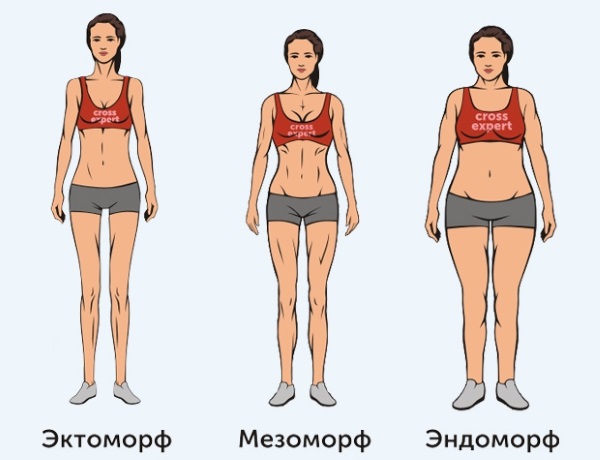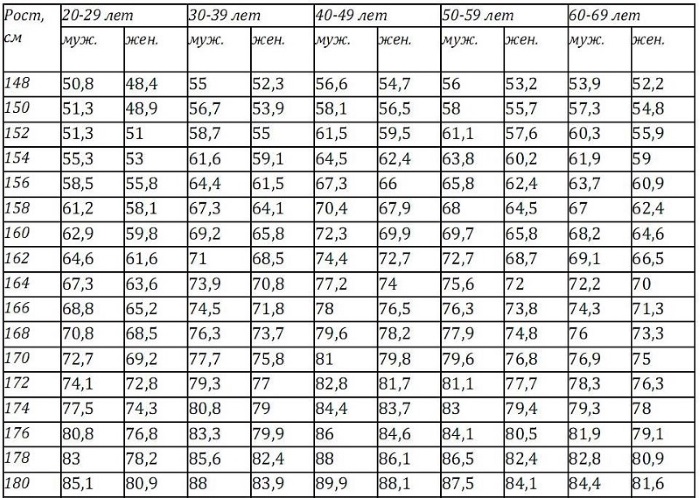Recently, there has been an active promotion of healthy lifestyle in Russia. As statistics show, the state of human health depends more than 50% on lifestyle and only 10% on the quality of medical services. One of the major problems of our time is obesity, caused by the fast food craze and eating disorders.
It is especially important to maintain optimal weight for women, because extra pounds negatively affect not only appearance, but also health.
Determination of physique
Despite the fact that beauty standards have long changed and plus size women are back in fashion, most girls who dream of modeling are still exhausting themselves with diets in an effort to achieve anorexic thinness.
However, attempts to achieve the ideal do not always end in success, because there are factors that cannot be adjusted, for example, the type of constitution that is laid down at the genetic level.
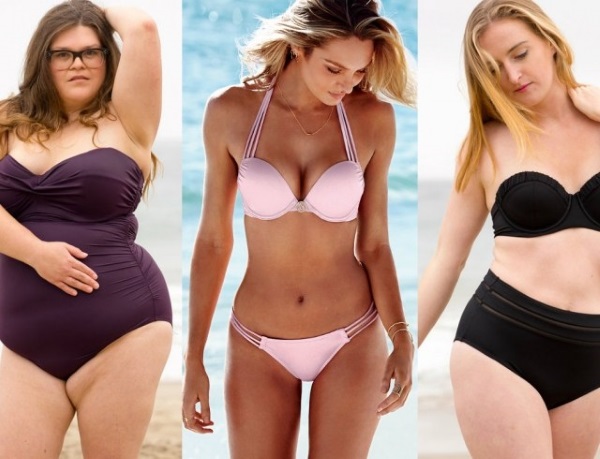
In medical practice, there are 3 types of physique, for the classification of which several systems are used.
Classification by the method of Soloviev
In accordance with the classification of Solovyov, all types of constitution can be conditionally divided into 3 types, each of which has a number of distinctive features: asthenic, normosthenic and hypersthenic.
Asthenic or thin bone (ectomorphs)
This type of physique is typical for fashion models. Ectomorph women are distinguished by thin facial features, pale skin, elongated limbs, long fingers, and poorly developed muscles. They are prone to rapid fatigue, have low hemoglobin levels, and are prone to frequent colds and gastrointestinal problems.
Normosthenic or normal (mesomorphs)
Women athletes. They are distinguished by proportionality of the figure, well-developed muscles, broad shoulders, narrow waist and hips. They are hardy, can gain weight quickly and shed it easily. They are prone to hypertension, diseases of the digestive system and upper respiratory tract.

 Don't miss the most popular column article: Fashionable bangs of the new season for medium, short, long hair. A photo.
Don't miss the most popular column article: Fashionable bangs of the new season for medium, short, long hair. A photo.Hypersthenic or broad-boned (endomorphs)
This type includes women collective farmers. They are stocky, have a powerful torso and well-developed limbs. They tend to be overweight. Endomorphs can be either tall and stately, or short and squat.
This physique is characterized by an "apple" or "pear" shape. As a rule, they suffer from hypertension, high blood cholesterol, diabetes mellitus and problems with the liver and respiratory organs.
The body type can be determined by the Solovyov index, which is equal to the length of the wrist girth of the working hand.
Soloviev index indicators:
| Body type | Indicator, cm |
| Asthenic | Less than 15 |
| Normosthenic | 15 to 17 |
| Hypersthenic | From 17 |
Weight-to-height tables
The optimal weight for a woman, as well as for a man, depends not only on the body type, but also on the balance of adipose and musculoskeletal tissue.
For women with an ideal weight-to-height ratio, the following parameters are characteristic:
- waist circumference is 25 cm less than hip circumference;
- the waist volume corresponds to the formula P-100, where P is the value of height in cm;
- with a height range of 165 to 175 cm, the waist circumference is approximately equal to the weight in kg.
Thus, as an ideal, you can take a girl with a height of 172-175 cm, with a hip volume from 95 to 97 cm and a waist of 72 cm, with 48 clothing sizes.
Table of proportional ratio of weight and height, taking into account body type:
| Height, cm | Weight by body type, kg | ||
| Ectomorphs | Mesomorphs | Endomorphs | |
| 151-155 | 45-47 | 48,05-50,2 | 52,6-54,7 |
| 156-160 | 48,35-49,15 | 51,25-52,3 | 55,8-56,90 |
| 161-165 | 50,25-52,45 | 55,1-56,2 | 58,1-60,9 |
| 166-170 | 53,7-55,1 | 57,75-59,15 | 62,3-63,7 |
| 171-175 | 56,5-59,45 | 60,4-63,45 | 65,1-68 |
| 176-180 | 61-65,1 | 64,85-70,1 | 69,65-75,9 |
To assess the ratio of weight to height, it is necessary to correctly measure the parameters. Almost everyone has a bathroom scale in the house, so measuring body weight will not be a problem, but even here there are some nuances.
Weighing rules:
- the measuring device must be placed on a level, hard surface, the presence of a carpet or slope may affect the result;
- feet on the platform should be placed parallel, trying to evenly distribute the center of gravity;
- it is recommended to take measurements in the morning on an empty stomach.
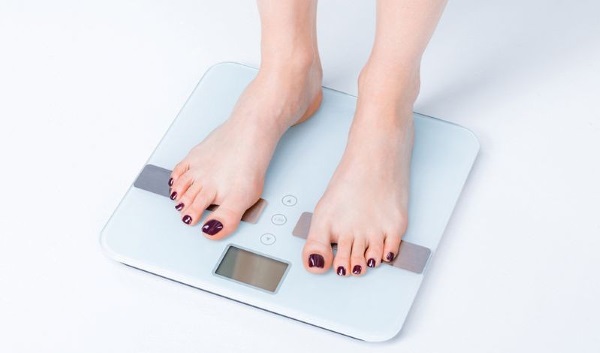
To correctly measure growth, you need to do the following:
- Prepare for the measurement: take off your shoes, loose your hair, or remove hairpins from your hair, which may affect the result.
- Stand with your back to the wall, and fix the position in which the heels, buttocks, shoulders and the back of the head will be in contact with it. Legs should be together, not shoulder width apart.
- Attach a ruler to the crown and use a mirror to check its position. The plank should be parallel to the floor and at a right angle to the wall.
- Use a pencil to mark where the end of the ruler touches the wall.
- Measure the distance from the floor to the mark on the wall with a tape measure.
After all the parameters are measured, you can begin to calculate their ratio. There are several algorithms for determining the optimal ratio of weight to physiological parameters of a person.
Quetelet index
The Quetelet index is a measure of the ratio of body weight to height that allows you to assess the degree of obesity or underweight and predict the health risks associated with these deviations.
The formula for calculating the Quetelet Body Mass Index (BMI) is simple:
- IR = M / P², where M is body weight in kg and P is height in meters.
For a woman with a height of 176 cm, weighing 97 kg, at the age of 37 years IR = 97 / 1.76² = 31.346
The result is compared with statistical data obtained from research.
IC values with risk assessment and recommendations:
| Health status corresponding to the value of IC | IR value | Assessment of the level of health risks | Recommendations | |
| Age 18 to 25 | Over 25 years old | |||
| Anorexia nervosa | Less than 17.5 | tall | Anorexia treatment, balanced nutrition, stimulating weight gain | |
| Lack of body weight | Less than 18.5 | no | ||
| Optimal value | 19,5-22,9 | 20,0-25,9 | no | |
| Excess mass | 23,0-27,4 | 26,0-27,9 | Middle | Weight loss through balanced nutrition and increased physical activity |
| Obesity I degree | 27,5-29,9 | 28-30,9 | Middle | |
| Obesity II degree | 30,0-34,9 | 31,0-35,9 | Tall | |
| Obesity III degree | 35,0-39,9 | 36,0-40,9 | Very tall | Weight loss is necessary |
| Obesity IV degree | From 40.0 | From 41.0 | Extreme | Immediate weight loss. |
Knowing the range of optimal IR values, and slightly changing the Quetelet formula, you can get the overweight (MI) value.
IM = M-OIKxR², where IM is overweight in kg, M is the current body weight in kg, OIK is the optimal Quetelet index
If we take the example above as a basis, then the calculation of excess weight will be as follows:
- IM1 = 97-20x1.76² = 35 kg;
- IM2 = 97-25.9x1.76² = 16.8kg
Thus, a woman with the specified parameters needs to lose from 16.8 to 35 kg to achieve normal weight.

 Don't miss the most popular column article: Fashionable haircut for medium hair. Photo, front and back views.
Don't miss the most popular column article: Fashionable haircut for medium hair. Photo, front and back views.By volume
The optimal weight for a woman can be estimated without weighing. To do this, it is enough to know the height and waist size.
There are several rules for accurately measuring the waist circumference:
- measurement should be done only with a tailor's centimeter, a hard tape will distort the indicator;
- measurements are taken on a naked body, in a standing position;
- the measuring tape should be located strictly horizontally;
- the waist circumference is measured at the narrowest point. The tape should not be allowed to cut into the body.
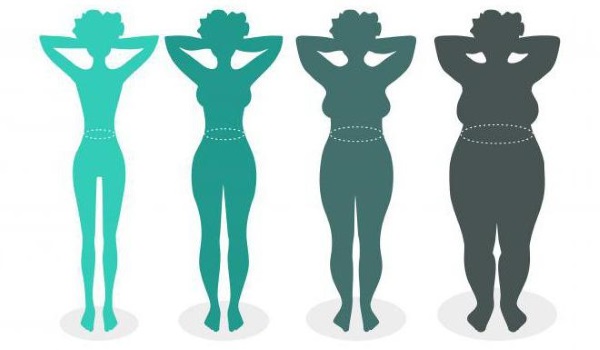
The waist-to-height ratio is calculated using the formula:
- IO = O / Px100, where O is the waist circumference in cm, P is the height in cm.
An example of calculation for a woman with a height of 176 cm and a waist size of 95 cm is as follows: IO = 95 / 176x100 = 53.97
Decoding the values of the volume index for women:
| Index value | Comments |
| Less than 35 | Anorexia |
| 35-42 | Excessive thinness |
| 42-49 | Optimal weight |
| 49-54 | Slightly overweight |
| 54-58 | Being overweight that poses a threat to health |
| Above 58 | Last degree of obesity |
Given age
With age, the metabolism slows down, so the optimal weight for a woman of 25 and 50 years old with identical physiological parameters will be different.
Table of dependence of weight on height and age:
| Height, cm | Optimum weight in kg trimmed for age in years | ||||
| 20-29 | 30-39 | 40-49 | 50-59 | 60-69 | |
| 150-160 | 48,9-59,8 | 53,9-65,8 | 58,5-69,9 | 55,7-65,8 | 54,8-64,6 |
| 161-170 | 61,6-69,2 | 68,5-75,8 | 72,2-79,8 | 68,7-76,8 | 66,5-75 |
| 171-180 | 72,8-80,9 | 77-83,9 | 81,7-88,1 | 77,7-84,1 | 76,3-81,6 |
| 181-190 | 83,3-92,3 | 87,7-95,8 | 89,3-97,4 | 86,5-95,6 | 82,9-92,9 |
Broca's formula
The simplest algorithm for calculating the optimal weight was developed at the end of the 19th century by the French anthropologist Paul Brock.
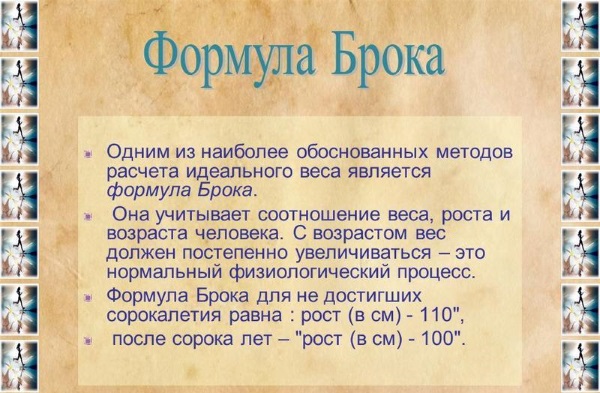
- ОВ = (Р-К1) хК2хК3, where ОВ - optimal weight, Р - height in cm, К1 - height correction factor, К2 - body type factor and К3 - age factor.
K1 coefficient values:
- 100 - for growth up to 165 cm;
- 105 - with a height of 166 to 175 cm;
- 110 - with a height of 176 cm.
K2 coefficient value:
- 0.9 - for a thin-boned body type;
- 1 - for normal;
- 1.1 - for a large bone.
K3 value:
- 0.9 - up to 30 years old;
- 1 - from 31 to 50 years old;
- 1.07 - from 51 years old.
Thus, the value of the optimal weight for a 40-year-old woman with a height of 176 cm, a broad-boned physique will be as follows: ОВ = (176-110) x1, 1x1 = 83.6 kg.
Nagler's formula
Nagler's concept does not take into account either a person's complexion or his age. Calculations are based solely on height and gender. In his opinion, a woman who is 60 inches (or 152.4 cm) tall, regardless of physique, should weigh 45 kg. For every additional inch of height, there should be 900 grams of weight. You need to add 10% to the result obtained and you get the optimal body weight.
Nagler's formula:
- OV = (45+ (P-60) x09) x1.1, where OV is the optimal weight, P is the height in inches (1 inch is 2.54 cm).
The optimal weight for a woman with a height of 176 cm (or 69.3 inches), calculated using the Nagler formula, will be 58.7 kg.
John McCallum's Formula
If the previous calculation options gave an idea of the optimal ratio of height and weight in women, then expert and methodologist John McCallum deduced the patterns of ideal body proportions. In accordance with his concept, all physiological parameters should be proportional to the girth of the wrist of the working hand.
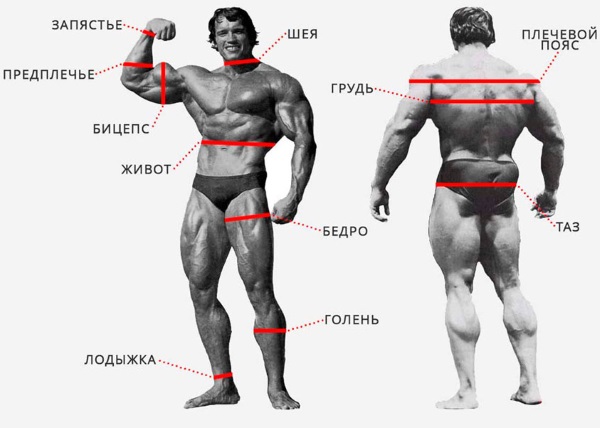
| Parameter | The size |
| Breast volume (OG) | 6.5 girths of the wrist |
| Hip girth | 85% of exhaust gas |
| Waist size | 70% of exhaust gas |
| Circumference of one thigh | 53% of the exhaust gas |
| Neck size | 37% of exhaust gas |
| Bicep circumference | 36% of exhaust gas |
| Calf circumference | 34% of exhaust gas |
| Forearm size | 28% of exhaust gas |
These proportions are a guideline for regular exercising bodybuilders. However, even for them, achieving such parameters is not always possible.

 Don't miss the most popular column article: Fashionable haircut for short hair. Photo, front and back views.
Don't miss the most popular column article: Fashionable haircut for short hair. Photo, front and back views.Lorentz method
Lorenz found his dependence of body weight on height.
His formula for calculating the optimal weight looks like this:
- ОВ = Р-100- (Р-150) / 2, where Р - growth.
According to this algorithm, for a woman with a height of 176 cm, a weight of 63 kg would be ideal.
Egorov-Levitsky table
When determining the optimal weight for patients, Russian nutritionists prefer to use tables developed by Russian physiologists Egorov and Levitsky. They indicate the maximum permissible body weight, taking into account age, gender and height, but excluding physique.

Egorov-Levitsky table:
| Height, cm | Weight, kg (adjusted for age) | ||||
| 20-30 years old | 31-40 years old | 41-50 years old | 51-60 years old | 61-70 years old | |
| 150 | 50 | 54 | 56,5 | 56 | 55 |
| 160 | 60 | 66 | 69 | 70 | 65 |
| 170 | 69 | 76 | 80 | 77 | 75 |
| 180 | 81 | 84 | 88 | 84 | 82 |
If you sum up all the calculations, the optimal average weight for a woman of 40 years with a height of 176 cm and a broad-boned physique can be considered 85 kg. The formulas of Nagler and Lorentz are more suitable for calculating the body weight of a photo model, but not an average statistical working woman, so you should not strive for these parameters.
Article design: Svetlana Ovsyanikova
Video on the topic: how to determine the optimal body weight
How to find your ideal body weight:

